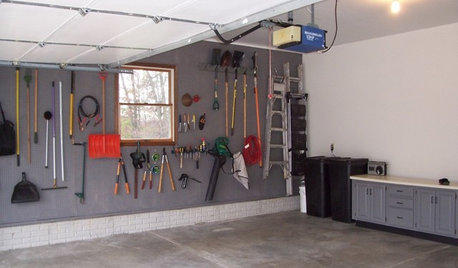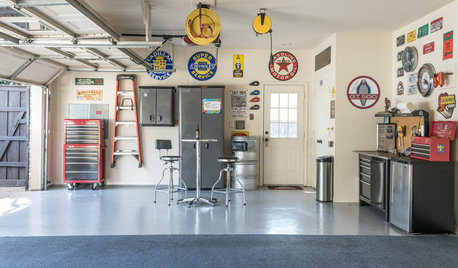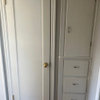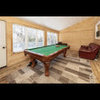Garage organization question
Grammyto6
9 years ago
Related Stories

ORGANIZINGPre-Storage Checklist: 10 Questions to Ask Yourself Before You Store
Wait, stop. Do you really need to keep that item you’re about to put into storage?
Full Story
ORGANIZING4 Questions to Help You Organize Your Favorite Photos
Organize your keeper photos with a system that's just right for you, whether it's in the cloud or you can hold it in your hand
Full Story
MORE ROOMS6 Garage Organizing Tips That Really Work
National Clean Out the Garage Day: Here's how to clear the clutter and organize what's left
Full Story
HOUSEKEEPING7-Day Plan: Get a Spotless, Beautifully Organized Garage
Stop fearing that dirty dumping ground and start using it as the streamlined garage you’ve been wanting
Full Story
MOVINGHiring a Home Inspector? Ask These 10 Questions
How to make sure the pro who performs your home inspection is properly qualified and insured, so you can protect your big investment
Full Story
REMODELING GUIDESSurvive Your Home Remodel: 11 Must-Ask Questions
Plan ahead to keep minor hassles from turning into major headaches during an extensive renovation
Full Story
KITCHEN DESIGN9 Questions to Ask When Planning a Kitchen Pantry
Avoid blunders and get the storage space and layout you need by asking these questions before you begin
Full Story
FEEL-GOOD HOMEThe Question That Can Make You Love Your Home More
Change your relationship with your house for the better by focusing on the answer to something designers often ask
Full Story
SELLING YOUR HOUSE15 Questions to Ask When Interviewing a Real Estate Agent
Here’s what you should find out before selecting an agent to sell your home
Full Story
GREEN BUILDINGConsidering Concrete Floors? 3 Green-Minded Questions to Ask
Learn what’s in your concrete and about sustainability to make a healthy choice for your home and the earth
Full StorySponsored
Industry Leading Interior Designers & Decorators in Franklin County
More Discussions









emma
western_pa_luann
Related Professionals
Joliet Custom Closet Designers · Roswell Custom Closet Designers · San Francisco Custom Closet Designers · San Tan Valley Custom Closet Designers · Shorewood Interior Designers & Decorators · Farmington Home Builders · Fresno Home Builders · North Richland Hills Home Builders · Riverton Home Builders · Spanish Springs Home Builders · Aldine Carpenters · Murphy Carpenters · Olathe Carpenters · South Miami Carpenters · Saddle Brook Carpenterspprioroh
camlan
talley_sue_nyc
talley_sue_nyc
talley_sue_nyc
lazy_gardens
Grammyto6Original Author
Grammyto6Original Author
talley_sue_nyc
annkh_nd
talley_sue_nyc
aloha2009